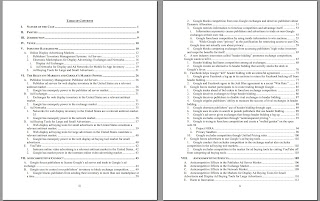Based on DNA left at a crime scene,
the technology – also known as massively parallel sequencing – can
predict externally visible characteristics of a person even in the
absence of matching profiles in police databases.
MPS can “predict gender, biogeographical ancestry, eye colour and, in coming months, hair colour”, according to the AFP.
Experts
say the technology is a “gamechanger” for forensic science but also
raises issues around racial profiling, heightened surveillance and
genetic privacy.
How does DNA profiling work?
DNA
– deoxyribonucleic acid – is formed of two interlocked chains that form
the basis of our genetic code. Each strand of DNA consists of four
units known as nucleotide bases – A, C, G, and T – that repeat in
patterns. The human genome comprises about 3bn pairs of these bases,
contained within 23 chromosomes.
Human DNA is 99.9% identical, and forensic
analysis is interested in the 0.1% of the genome that makes each of us
genetically unique.
Traditional
DNA profiling focuses on 24 sites on the genome where chains of
nucleotide bases differ in length between people. The site sequences do
not encode for specific genes that determine physical characteristics
such as eye or hair colour. The method can determine biological sex
because one of the 24 target sites is on the X chromosome and another is
on the Y chromosome.
“If I told you my DNA
profile for these different regions, it wouldn’t mean anything to you,”
said Prof Adrian Linacre, chair in forensic DNA technology at Flinders
University. “You couldn’t look at that and think: this guy’s from
northern Europe, he’s got blue eyes.”
In
combination, the different sequence lengths at each of these 24 sites is
enough to give a person a unique genetic fingerprint. DNA collected
from crime scenes can be matched to DNA profiles on criminal databases.
“If your person is not on the database, it’s not very useful,” Linacre
said, adding that links could be made to relatives.
What is massive parallel sequencing?
MPS has been used commercially for more than a decade and has been used overseas in forensic cases.
Linacre
describes it as a “massive gamechanger”. The technology is capable of
sequencing “tens of millions of bits of DNA in one go”, he said. “This
new methodology is telling you things about the person … externally
visible characteristics.”
Rather than looking
at the length of strings of sequences, MPS can look at single
nucleotides – whether, at a specific location, a base is an A, C, G or
T.
There are several single base changes that
are major determinants of eye colour, for example. “They’re dotted
around your DNA … you put them all together, and you’ve got a real high
probability of saying: this guy’s got bluey-green eyes,” Linacre said.
MPS
differs from genetic genealogy tests used to identify people’s ethnic
origin or relatives on genealogy databases, as was used by California
police to catch Joseph James DeAngelo, the Golden State Killer.
How will next-gen DNA sequencing be used in Australia?
The
new sequencing technology will allow investigators to gain information
about the physical characteristics of a potential suspect even when
there is no matching DNA profile on a law enforcement database.
According to the AFP, the technique could be used in “missing persons and unidentified human remains cases”.
“Most
things we find at crime scenes are mixtures of two or three people’s
DNA,” Linacre said. While traditional DNA profiling techniques tend to
work well even on degraded DNA, using MPS for a mixture of fragmented
DNA could lead to inconclusive results, he said. “We’re still yet to
develop really good software programmes to deconvolute massive parallel
sequencing data.”
Are there ethical concerns?
In
a statement, Dr Paul Roffey, the lead MPS scientist at AFP forensics,
said the agency planned “to widen prediction capabilities to include
traits such as age, body mass index and height”.
“We
will also be seeking opportunities to provide fine detail predictions
for facial metrics such as distance between the eyes, eye, nose and ear
shape, lip fullness, and cheek structure”.
Age can accurately be determined by genetic
analysis; body composition and height – which have genetic components –
are also influenced by environmental factors.
The
ability to predict the phenotype of a suspect raises ethical issues,
particularly around racial profiling, said Dr Loene Howes, senior
lecturer in criminology at the University of Tasmania.
Being
able to determine a suspect’s ancestry could place “a whole population
group under suspicion – they become subject to greater surveillance than
the rest of the community,” she said. “It’s not necessarily that
informative anyway, because there might be lots of people who fit the
[description].”
Genetic privacy is also a
concern. “If you start to look at other parts of DNA which encode things
which are very personal to you, there’s a line I think which needs to
be drawn,” Linacre said.
Howes added: “The
problem with the introduction of any of these things is that it often
happens without … the community being fully aware of what could be
involved. There’s often function creep, where a scientific technique is
introduced for one reason, and gradually starts being used for other
purposes that weren’t agreed to initially.
“There should be some very clear thresholds in place [for] when this can be used.”
Source:
https://www.theguardian.com/australia-news/2021/dec/08/how-australian-police-will-use-dna-sequencing-to-predict-what-suspects-look-like?fbclid=IwAR3g54cKluEZxgvl-_4B46fTyjpbCLPf9E0EgXydgsjMKQTqiZSNx06Lv6o







